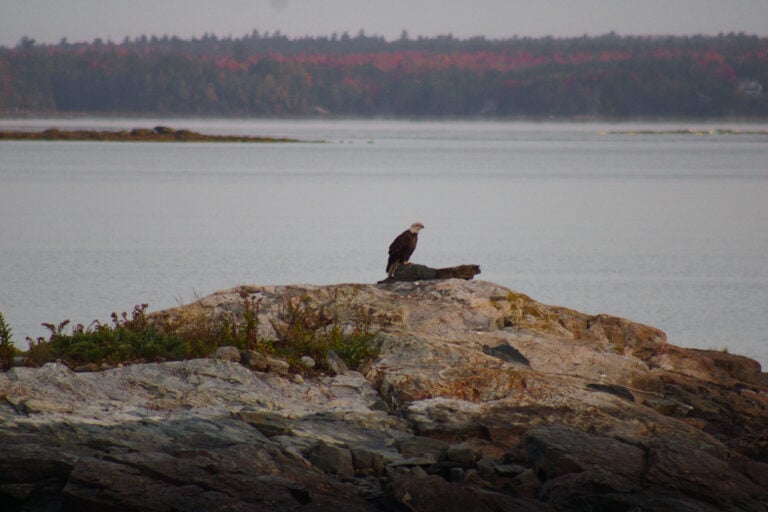This post may contain affiliate links. See our affiliate disclaimer here.
Acadia National Park might just be the most unique place in the entire National Park system. It’s where the mountains literally meet the sea, where pine forests smell like Christmas year-round, and where you can eat fresh lobster one minute and be hiking above the clouds the next.
If you’re planning a trip to Maine, Acadia is a must-stop. This 3-day Acadia National Park itinerary will help you make the most of your time, whether you’re camping in your rig, staying at a nearby campground, or crashing in one of Bar Harbor’s cute little inns.
Contents
Planning to Visit Acadia National Park
Before you pack up the RV, here’s what you need to know to make your visit smooth and stress-free.
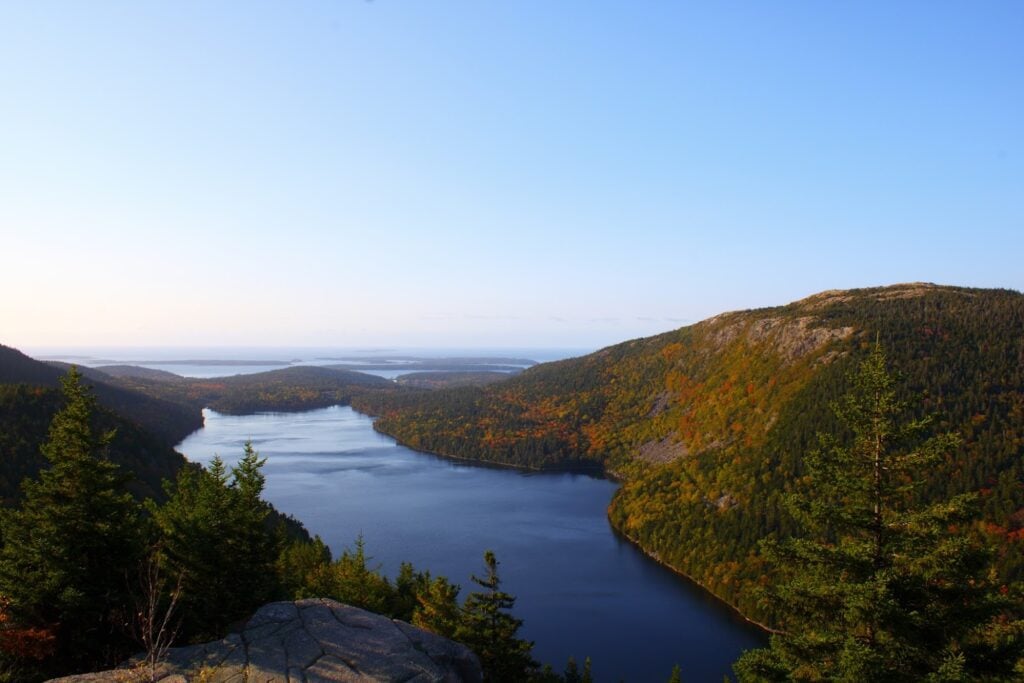
Park Passes
Everyone visiting Acadia needs an entrance pass. It costs $35 per vehicle and is good for seven days. You can buy it online at Recreation.gov or when you arrive. If you plan to visit several national parks this year, go ahead and get the America the Beautiful annual pass for $80. It covers all national parks and is worth it after just two or three visits.
Cadillac Mountain Reservations
If you want to drive up Cadillac Summit Road (you do), you’ll need a timed vehicle reservation. They’re only a few bucks, but they sell out fast. Book in advance on Recreation.gov and plan your sunrise or sunset time carefully. You can also hike up if you don’t get a reservation, but it’s a long climb.
Camping Reservations
If you plan to camp near the park, make your reservations early. Campgrounds around Bar Harbor fill up months in advance, especially for summer weekends. Sites inside the park and private campgrounds nearby often book out completely by mid-spring.
When to Go
The park is open year-round, but most people visit from May through October. Summer brings warm temps and crowds, while fall is cooler and full of color. If you can swing it, September and early October are the sweet spot with fewer people, beautiful weather, and the leaves start to turn.
RV Access
Acadia is surprisingly RV-friendly. Most roads can handle RVs up to about 35 feet, but Park Loop Road is narrow in spots, and parking is limited. I’d recommend unhooking and exploring in your tow vehicle or toad car.
3-Day Acadia National Park Itinerary
Day 1: Classic Acadia Highlights

Morning: Park Loop Road and Sand Beach
Start your trip with Acadia’s famous scenic drive. Park Loop Road circles past many of the park’s top sights, and you’ll find yourself pulling over every few minutes for photos. Stop at Sand Beach first. It’s one of the only sandy beaches in Maine and a gorgeous spot to stretch your legs and feel the icy Atlantic.
If you have time, walk the Ocean Path Trail from Sand Beach to Otter Point. It’s an easy walk that hugs the rocky shoreline and gives you postcard-perfect views of Thunder Hole and the cliffs. When the tide is right, you might even see waves crash into Thunder Hole with a loud boom.
Afternoon: Jordan Pond and Bubble Rock
After a morning on the coast, head inland to Jordan Pond. Stop at the Jordan Pond House for lunch. Their popovers (fluffy, buttery pastries served with jam) are a tradition. Eat on their large lawn overlooking the pond.
Evening: Bar Harbor
Wrap up your first day in Bar Harbor, the little seaside town right outside the park. Wander along the waterfront, browse the gift shops, and grab dinner at one of the many restaurants downtown. Side Street Café has amazing lobster mac and cheese, and Thrive Juice Bar is a great vegetarian spot. End the night with an ice cream cone and a walk along the Shore Path before heading back to your campsite.
Day 2: Mountains, Lakes, and a Perfect Sunset
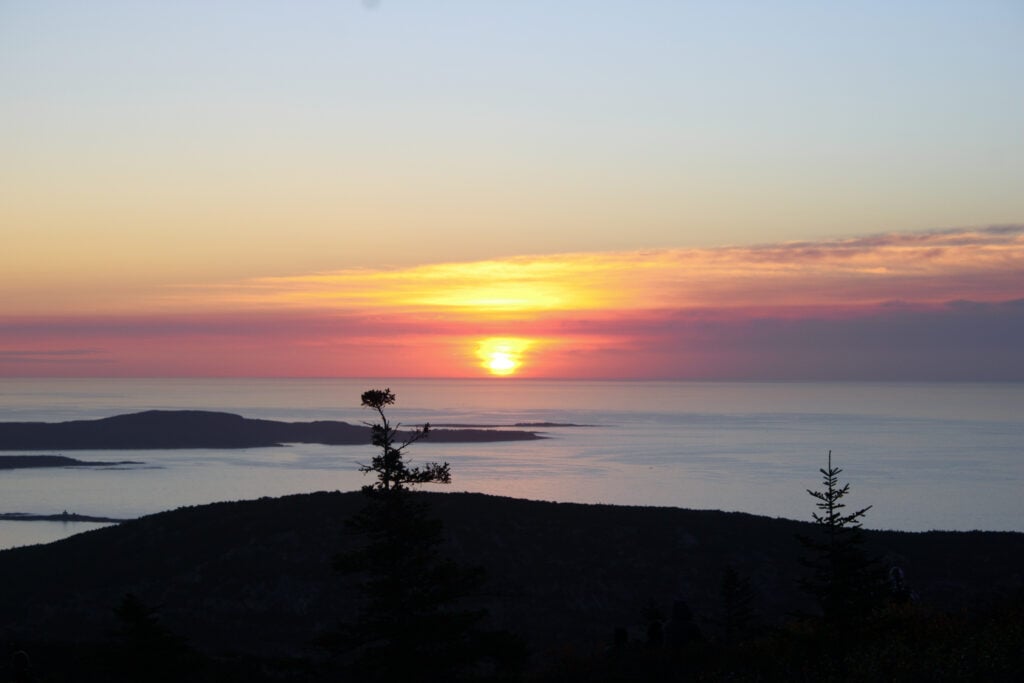
Early Morning: Cadillac Mountain Sunrise
Set your alarm early for Acadia’s most famous view. Cadillac Mountain is the highest point on the U.S. Atlantic coast and one of the first places in the country to see the sunrise. The summit overlooks the islands of Frenchman Bay, and on a clear morning, it’s breathtaking.
If you couldn’t get a driving reservation, you can hike up on the North Ridge Trail, but be prepared for a workout. Bring coffee, a blanket, and warm clothes; even in summer, it gets chilly up there before sunrise.
Midday: Carriage Roads and Eagle Lake
After breakfast, explore the Carriage Roads — a network of wide, gravel paths built by John D. Rockefeller Jr. back in the early 1900s. They’re closed to vehicles and perfect for walking or biking. You’ll pass through quiet forests, stone bridges, and peaceful lakes.
One of the best rides is the Eagle Lake Loop, about six miles long. You can rent bikes in Bar Harbor or just walk a section if you prefer. It’s a calm, scenic way to spend a few hours and see a different side of Acadia.
Evening: Bass Harbor Head Lighthouse
Drive over to the western side of Mount Desert Island in the evening to catch sunset at Bass Harbor Head Light. It’s one of the most photographed lighthouses in New England and looks especially beautiful when the sky turns pink. Parking is tight, so go early and be patient. Bring a camp chair or just sit on the rocks and enjoy the view.
Day 3: The Quiet Side of the Park
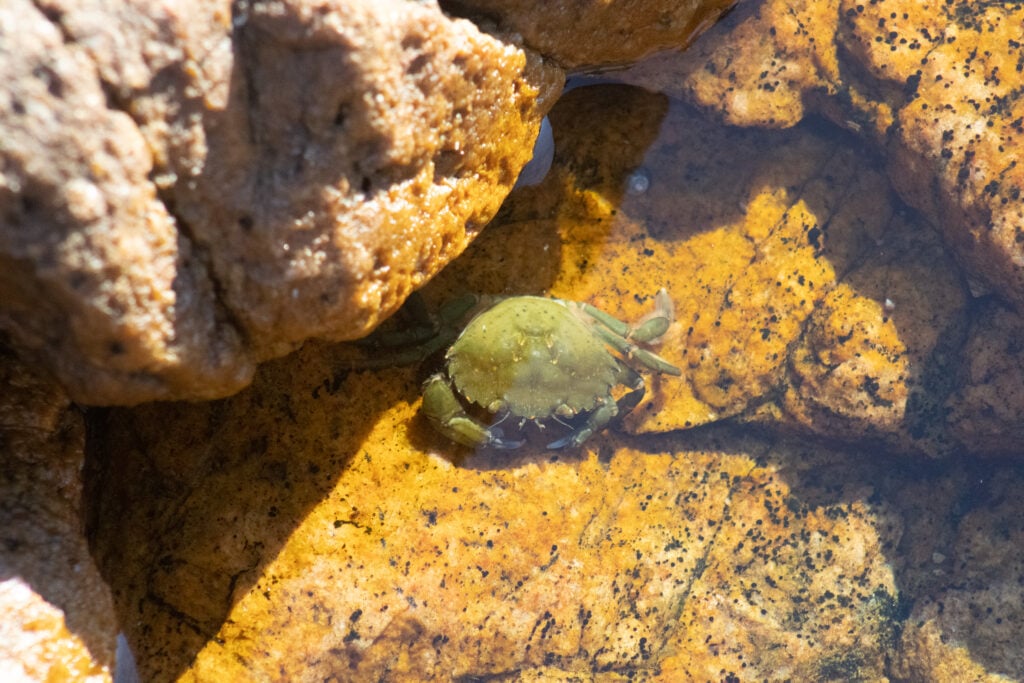
Morning: Wonderland and Ship Harbor Trails
On your last day, explore the Quiet Side of Acadia. This area is less crowded but just as beautiful. The Wonderland Trail and Ship Harbor Trail are both short, easy coastal hikes that take you through spruce forests to rocky beaches covered in tide pools. If you go at low tide, you can spot crabs, snails, and tiny sea stars clinging to the rocks.
Afternoon: Southwest Harbor and Echo Lake
Stop for lunch in Southwest Harbor, a laid-back fishing town with a few good restaurants. Beal’s Lobster Pier is the classic spot for lobster rolls and fried clams, and Little Notch Bakery has fresh sandwiches and pastries.
After lunch, cool off with a swim at Echo Lake Beach. The water is warmer than the ocean, and the mountain backdrop is stunning. If you’re still in the mood to hike, check out the Beech Mountain Trail, a short, moderate climb that rewards you with panoramic views from the old fire tower at the top.
Evening: Campfire and Stargazing
Spend your final night relaxing by the fire. Acadia’s night skies are incredibly dark, and on a clear night, you can see the Milky Way stretching across the sky. If you visit in late summer, try to plan your trip around the Acadia Night Sky Festival, which includes ranger talks, telescope viewings, and astrophotography sessions.
Where to Stay
RV Camping Options
- Blackwoods Campground is inside the park and feels tucked into the forest. Sites don’t have hookups, but you’re close to Park Loop Road and the ocean.
- Bar Harbor Campground sits just outside the park and has full hookups plus some great water views.
- Smugglers Den Campground is family-owned and has full hookups, a pool, and easy access to hiking trails on the Quiet Side.
Lodging for Non-RV Travelers
- Bar Harbor Inn is right on the waterfront with cozy rooms and amazing views.
- Acadia Hotel Downtown is a small boutique hotel that puts you within walking distance to everything in Bar Harbor.
- Seawall Motel is a quiet, affordable choice near the western side of the park if you prefer to stay out of the crowds.
Final Tips for Visiting Acadia
- Pack layers. The weather changes quickly, and mornings can be cold even in July.
- Bring bug spray, especially in spring and early summer when black flies are out.
- Cell service is limited, so download offline maps before you go.
- Start your days early. Parking fills up fast at popular trailheads.
- Take your time. Acadia isn’t just about checking off sights, it’s about slowing down and soaking up Maine’s wild beauty.
Happy Travels!
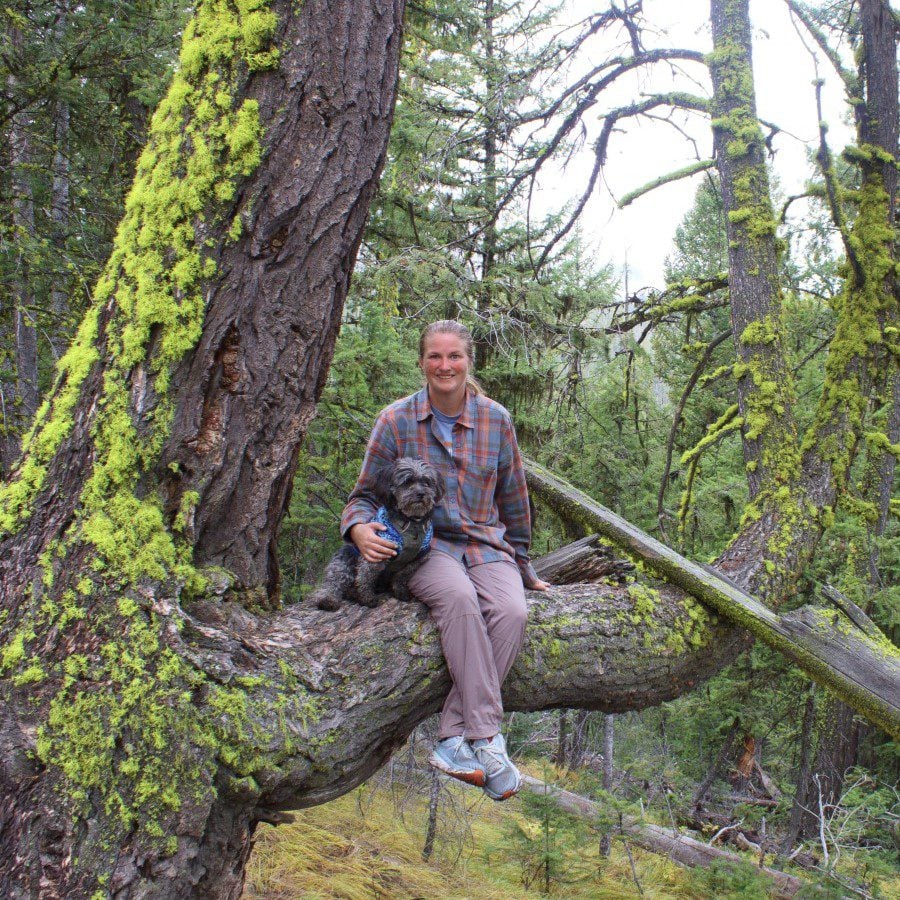
Christina Pate is a seasoned full-time RVer who, along with her husband Justin, has journeyed across the US, Canada, and Mexico. Drawing from her extensive travels, RV repairs and RV renovations, she founded Travels with Ted to guide and inspire fellow RV enthusiasts. Christina is also the co-author of The Owner’s Guide to RV Maintenance and the creator of My RV Log Book.

